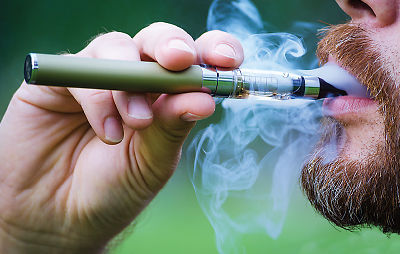Electronic Cigarettes May Be Gateway to Tobacco Smoking
Abstract
The popularity of electronic cigarettes may threaten the success of the decades-long battle against tobacco use in the United States.

Electronic cigarettes (e-cigarettes) are marketed to help people quit smoking regular cigarettes and reduce addiction to nicotine, but a new study published March 14 in JAMA Pediatrics demonstrates that it may be doing the opposite in some adolescents.
Researchers from the Center for Tobacco Control Research and Education at the University of California, San Francisco (UCSF), conducted the first published analysis of the relationship between e-cigarette use and conventional smoking among adolescents in the United States.
“Despite claims that e-cigarettes are helping people quit smoking, we found that e-cigarettes were associated with more, not less, cigarette smoking among adolescents,” said Lauren Dutra, Sc.D., lead author and a postdoctoral fellow at UCSF.
E-cigarettes are cigarette-like mechanical devices that vaporize a liquid form of nicotine without the smoky smell and high levels of toxins associated with conventional cigarette smoking, the authors noted. The devices are being aggressively promoted by tobacco manufacturers as a smoking-cessation aid and safer alternative to cigarettes. The advertisements can be seen on the Internet and even traditional media channels, which banned cigarette advertisements more than 40 years ago.
“This is an exploding product on the market—being marketed to both adults and youth,” said Douglas Ziedonis, M.D., M.P.H., a substance abuse expert and chair of the Department of Psychiatry at the University of Massachusetts Medical School. “Flavors, such as cinnamon apple and strawberry, and the vibrant colors in which e-cigarettes are sold, make them appealing to children and teens.”

Douglas Ziedonis, M.D., M.P.H., says that the scientific community is finally beginning to question the safety and long-term effects of electronic cigarettes.
Ziedonis told Psychiatric News that until recently, e-cigarettes—which are unregulated by the Food and Drug Administration—have received very minimal academic press. “The scientific community is beginning to become aware of e-cigarettes and ask a lot more questions about the harms or benefits of these products. Research is telling us that we need to treat e-cigarettes and other nicotine vapor products as we do cigarettes.”
In the UCSF study, data were gathered from the nearly 40,000 middle-school and high-school youth who completed the National Tobacco Youth Survey in 2011 and 2012. Adolescents were surveyed on their tobacco use—including cigarettes, smokeless tobacco products, and emerging tobacco products—within the prior 30 days.
The analysis showed that e-cigarette use among the students doubled within one year, from 3.1 percent to 6.5 percent. One troubling finding was that the use of e-cigarettes was associated with an increased risk of beginning to smoke conventional cigarettes. In addition, many of the e-cigarette users indicated that they were using regular cigarettes along with the new products.
Ziedonis said that the study’s findings illustrate that once an individual begins using nicotine products and becomes addicted to nicotine, that person is likely to desire the “full range” of effects, which are provided by regular cigarette smoking.
Jill Williams, M.D., director of the Division of Addiction Psychiatry at Rutgers University Robert Wood Johnson Medical School and an expert in nicotine addiction, told Psychiatric News that these findings are particularly concerning since the rates of conventional smoking have been declining to record lows over the last several years.

Jill Williams, M.D., believes that physicians should be skeptical of defining electronic cigarettes as a smoking cessation aid, since these claims have not been approved by the Food and Drug Administration.
“Behavioral health professionals, including psychiatrists, should do more to assess and treat their adolescent and adult patients for tobacco dependence, just as they would for any other substance use disorder,” said Williams, who emphasized that e-cigarettes should not be used as a cessation aid, since they have not been evaluated with the same level of rigor as evidence-based approaches to smoking cessation. “The exact chemical components of the vapor are largely unknown and can vary among devices and manufacturers. . . and we should remain skeptical” of their value in smoking-cessation programs.
Williams stressed that if e-cigarettes continue to go unregulated, their growing popularity has the potential to undo decades of progress in reducing tobacco use by making smoking more attractive to youth and those with nicotine addiction.
The UCSF study was funded by the National Cancer Institute. ■
An abstract of “Electronic Cigarettes and Conventional Cigarette Use Among U.S. Adolescents” can be accessed here.



